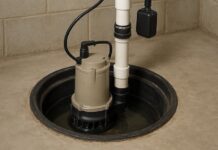The mortgage industry has changed a lot in recent years. As technology continues to advance, lenders are discovering the benefits of automation that make their processes more efficient. This not only helps to shorten the time from loan initiation to closing but also reduces the burden of hiring more personnel. Learning about what mortgage automation has to offer and how it is implemented will help lenders utilize it for their processes and serve clients better.
Understanding Mortgage Automation
Mortgage automation refers to using technology to handle routine tasks in the mortgage industry. Instead of requiring humans to manually perform these various processes, it eliminates the tedious process of task management. These tasks include processing documents, data entry, and compliance checks. Automation tools can also churn out massive amounts of information extremely quickly and accurately while also reducing the chances of errors. It allows staff to focus on more strategic jobs, thereby improving productivity.
Automation systems work seamlessly with existing software. Consistency across the various components of the mortgage process, including the application stage, makes the transaction easier from start to finish. This means lenders can still provide great service but at a greater speed.
Benefits of Faster Closings
One of the most significant benefits of mortgage automation for faster closings is that it saves time during closing. In the past, it took weeks, sometimes months, to process a mortgage application. But automation drastically reduces this time frame. A quick closing means more satisfied customers. It also enables lenders to close loans at a quicker pace, thereby allowing them to process more transactions. As a result, you can generate more revenue without hiring extra personnel.
Improving Accuracy and Compliance
Accuracy is key in the mortgage industry. It reduces the chances of error, as data is treated the same way every time. Automation can verify information, identify discrepancies, and ensure compliance with regulatory requirements. It can be difficult to make these adjustments in real time when managing the process manually.
Automation also helps in ensuring compliance. Mortgage industry regulations are tight and ever-changing. These automated tools update regularly to incorporate new regulations and ensure all processes remain compliant. This mitigates legal risks and also protects the lender from penalties.
Enhancing Customer Experience
Automation also helps in enhancing customer interactions. The application process becomes clearer and simpler for borrowers. They can do this through user-friendly apps where they upload documents, track progress, and get updates. This convenience adds to the experience and builds trust between the borrower and lender.
Moreover, automation enables personalized communication. Data analytics can help lenders understand borrower preferences and offer relevant services. This customer-centric approach helps maintain long-term relationships with customers.
Implementing Automation Successfully
Lenders interested in mortgage automation for faster closings should plan ahead. You should start by assessing your needs and challenges and then search for an appropriate solution. Once you have selected a tool, train your staff to ensure a smooth transition.
Address the concerns of the employees by clearly explaining the advantages and changes that automation brings. Convincing staff to become more comfortable with technology will help them understand its benefits and thereby build a more productive, enthusiastic team. Ongoing assessment and feedback ensure that automated processes are aligned with changing business needs.
Challenges and Considerations
Automation comes with many advantages, but there are a few drawbacks as well. The initial costs can be quite high, and some systems require elaborate integration with existing infrastructure. However, the long-term benefits usually justify these upfront costs.
The second important factor of mortgage automation for faster closings is related to data security. Ensuring the protection of sensitive information is key; therefore, automated systems need to operate under strict security protocols. This is where lenders need to collaborate with the technology providers to develop a secure ecosystem.
Conclusion
Mortgage automation is a powerful tool for lenders who want a better customer experience and greater efficiency in their operations. Automation allows lenders to process and complete more transactions by decreasing closing time, increasing accuracy, and preventing compliance mistakes. Although there are challenges to consider, proper planning and execution can mitigate the risks and amplify the benefits.
Find a Home-Based Business to Start-Up >>> Hundreds of Business Listings.















































